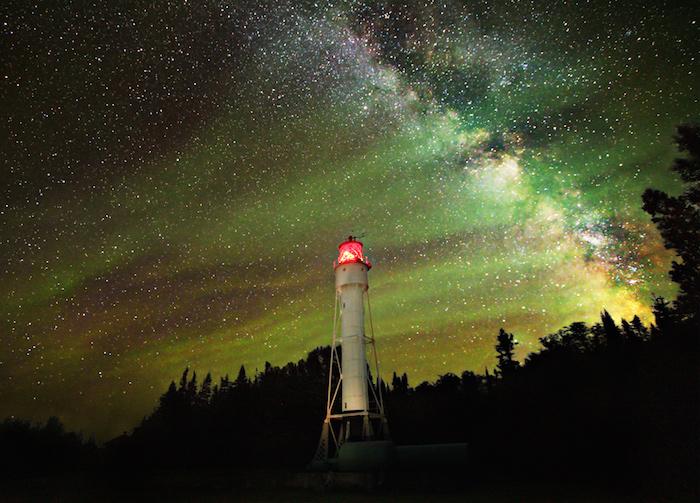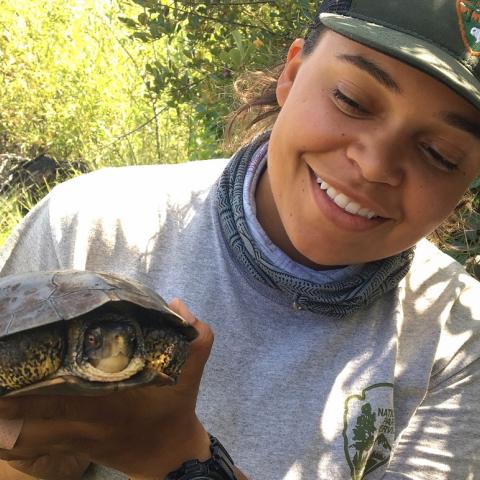Fewer than 12 months separate the National Park Service's 99th birthday and its 100th. What happens over the course of the next year will go a far way to determining if it will, or will not, be a happy birthday.
Here's a list of birthday wishes with that in mind:
* That Congress in its waning weeks in Washington this fall act quickly to pass either President Obama's National Park Service Centennial Act or come up with something very similar. The investment the president proposes to chip away into the infrastructure needs is modest but no less necessary, and his proposals to create new revenue funding mechanisms for the parks show a willingness to be a little creative, something Congress has failed to do when it comes to park funding.
* Let's see more parks adopt night sky programs. These are incredibly wonderful and popular programs that teach us not only something about the stars overhead, but perhaps also create more awareness about problems with light pollution and air pollution. Have the National Park Foundation find an underwriter to pay Tyler Nordgren to create more night sky posters for the parks. There also could be more night photographs taken against such iconic backdrops as Delicate Arch in Arches National Park, the Tetons in Grand Teton National Park, or perhaps the sea stacks at Olympic National Park. Sell these works as both posters and limited edition prints to help fund the parks' night sky programs. (You can purchase prints of the night sky photograph collection taken at Apostle Islands National Lakeshore here.)
* Let's hope that the National Park Service and local stakeholders can come to agreement on a shuttle system for Muir Woods National Monument in California. The current parking system is not only tenuous, but dangerous, as some late-morning visitors have to park a mile or two away from the monument entrance and walk on a narrow two-lane road to the monument. The existing ramshackle roadside parking system also is hard on both the shoulder of the road and the grass beyond it.

Let's see more night sky programs, and photographs such as this one Mark Weller and John Rummel took of the Devils Island Light Station at Apostle Islands National Lakeshore.
* That National Park Service Director Jon Jarvis reverse course on recent management decisions concerning off-road vehicle access in Big Cypress National Preserve in Florida. They are contrary to the National Park Service Organic Act and the health of many threatened and endangered species in the preserve.
* That the National Park Service find the resources, financially as well as staff-wise, to bolster its public outreach efforts in terms of interpretation. There are so many wonderful stories to be told from the national parks, yet the agency simply doesn't have the staff to tell those stories. Public affairs offices in the parks often consist of just one individual who has been handed that job in addition to their regular role. As a result, not only do they not have the time to promote the park's wonders, but oftentimes they might not have the requisite skills.
* That fledgling friends groups connect with such stalwarts as the Friends of Acadia, Grand Teton National Park Foundation, Friends of the Smokies, and the Rocky Mountain Conservancy to master their roles as park partners. When you look at what Friends of Acadia has done in terms of teen involvement, how the Grand Teton National Park Foundation has shouldered restoration of the Jenny Lake area, the masterful trails program fostered by Friends of the Smokies, or the education programs offered through the Rocky Mountain Conservancy, you have to be impressed.
* That Congress back off on trying to enforce its will on Biscayne National Park when it comes to the marine reserve zone planned for 6 percent -- yes, just 6 percent -- of the park's marinescape. This zone, protected from recreational fishing, could improve the health of the coral reef, bolster fisheries, and provide an amazing seascape for snorkelers, scuba divers, and visitors in glass-bottom boats to observe.

Wouldn't it be great to see park-specific holiday ornaments for sale to the general public?/NPS
* Back in 2007, parks were invited to send Christmas ornaments created with their park in mind to the White House to hang on trees there. These ornaments were wildly popular ... yet they weren't offered for sale, as they were considered gifts to President Bush. Let's take another shot at this program, but this time figure out a way to mass produce them here in the United States and offer them for sale. Another revenue stream that could be used to truly benefit the parks.
* That the National Park Service leadership make the agency a better place to work. Compared to 315 government agencies, the Park Service in 2014 ranked in the lower 25 percent in effective leadership, strategic management, team work, and work-life balance, among other categories. And while pay levels did show slight growth over 2013, the agency still ranked among the bottom 25 percent of government agencies (245 out of 314), the survey indicated. The Park Service's overall index score for 2014, 53.7, was the lowest since the survey was first taken in 2003, and ranked the agency 213 out of 315 agencies, down 13 slots from its 2013 ranking.
Park Service staff no doubt are growing weary of being "paid in sunsets" and want more both in pay as well as in leadership. According to the 2014 rankings, employees were unhappy with leadership of the Park Service when it comes to motivation, commitment, integrity, and professional development, had lost respect for senior leaders, and struggled with finding balance between their jobs and personal lives.
* That park visitors take seriously the cautions they are given when entering a park. Bison in Yellowstone are not petting zoo animals, nor are the grizzly bears. And there's a reason they call them "hot" springs. Those waterfalls at Yosemite are beautiful, and will cool you off, but they'll also kill you if you get too close.
No doubt there are plenty more birthday wishes for the Park Service, so please share yours here.




 Support Essential Coverage of Essential Places
Support Essential Coverage of Essential Places







Comments
The reference to ORV use in Big Cypress Nat. Preserve is, unfortunately, all-too-common in other national parks, particularly those in Alaska. Virtually every national park unit in Alaska experiences impacts from ORVs, including designated wilderness lands. The modern four wheeler and other ORV variations became widely used in rural Alaska during the late 1970s and early 80s. The technology advanced rapidly making the machines increasingly powerful and manueverable. Many can cross waist-deep streams and some are fully amphibious. Their knobby tires and four-wheel drives literally masticate the fragile ice-rich land and topple small trees as they bull their way through brush and over steep terrain leaving a wake of environmental damage that may take generations to heal. The National Park Traveler may want to do an article on ORV issues currently facing Katmai NP&P, Wrangell-St. Elas NP&P and other parks in Alaska.
Well said!
I'm all for Lee Dalton's suggestion of respecting the parks and those who staff it. I wonder how many people actually stop and think about that. I try to pick up after others, but I admit to forgetting about thanking those people who clean up after *me* as well as others, and who are there to provide assistance and information.